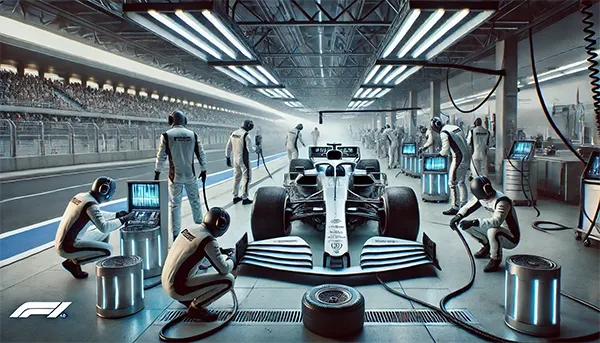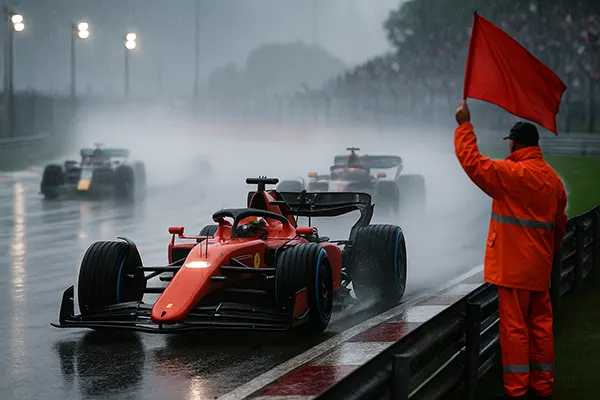Similar articles
Innovative Cooling Systems for Formula 1 Pilots in the 2025 Season

Formula 1 has always been at the forefront of technological advancements, and one of the critical challenges that engineers constantly work to overcome is managing driver temperatures. With cockpit temperatures often exceeding 50°C, innovative cooling systems are essential for peak driver performance. In 2025, cutting-edge solutions are being introduced to ensure optimal temperature regulation inside F1 cars.
Advanced Cooling Technologies for F1 Drivers
Modern F1 cooling systems have evolved significantly over the years, incorporating state-of-the-art technologies to improve driver comfort and concentration. The latest systems integrate active cooling solutions directly into race suits, helmet ventilation, and car aerodynamics.
One of the most significant advancements in 2025 is the use of liquid-cooling vests. These vests circulate coolant through microtubes embedded in the fabric, providing efficient heat dissipation without adding excessive weight. The coolant is stored in a compact reservoir within the car, which actively regulates temperature fluctuations during a race.
Additionally, helmet cooling has seen major improvements. The latest designs feature built-in micro air channels that direct airflow around the driver’s head, reducing heat buildup. Some teams are even experimenting with phase-change materials (PCMs) integrated into helmet linings, which absorb and release heat depending on external conditions.
Integration of Aerodynamics and Cooling Systems
Aerodynamics play a crucial role in maintaining optimal driver temperatures. In 2025, teams are integrating advanced air intake systems that funnel cool air into the cockpit while minimising drag. These vents are strategically placed to maximise efficiency while ensuring the car’s overall aerodynamic performance remains unaffected.
Furthermore, some teams are trialling active air circulation systems. These systems use small electric fans positioned within the cockpit to regulate airflow dynamically based on real-time temperature data. This technology not only enhances driver comfort but also prevents excessive sweating, which can impact grip and visibility.
Innovative materials also contribute to improved cooling. Lightweight heat-reflective coatings are now being applied to cockpit surfaces to reduce heat absorption from external sources. These coatings significantly lower the internal temperature, especially during high-sunlight races.
Smart Temperature Regulation Systems
With the rise of artificial intelligence and real-time data processing, cooling systems in F1 cars have become more sophisticated than ever. Smart sensors embedded in race suits and helmets now provide continuous temperature monitoring, allowing engineers to make real-time adjustments.
AI-driven climate control is a key feature of 2025’s innovations. These systems analyse external weather conditions, track the driver’s core temperature, and adjust cooling mechanisms accordingly. If a driver’s temperature rises above an optimal threshold, the AI can activate additional cooling functions automatically.
Moreover, electrolyte-replenishment systems are becoming a standard feature. These devices supply drivers with hydration fluids tailored to counteract dehydration effects, which can be exacerbated by extreme cockpit temperatures. By integrating these systems with biometric monitoring, teams ensure that drivers maintain peak physical condition throughout a race.
The Role of FIA Regulations in Cooling Technology
The FIA has implemented new regulations to promote driver safety and comfort in extreme heat conditions. Teams must now adhere to strict temperature management guidelines, ensuring that drivers are not exposed to unsafe heat levels for extended periods.
One of the key regulations introduced in 2025 is the mandatory integration of emergency cooling measures. These include backup cooling packs that can be activated in case of system failure, preventing potential heat-related medical issues during a race.
Additionally, pre-race cooling protocols have been standardised. Drivers now undergo a controlled cooling phase before entering their cars, allowing their core body temperature to stabilise before intense physical exertion. This practice has proven to reduce the risk of heat exhaustion and enhance overall performance.

Future Innovations in F1 Cooling Systems
Looking ahead, teams and manufacturers are exploring next-generation cooling technologies to push performance boundaries even further. One area of focus is the development of adaptive cooling suits that use advanced nanomaterials to regulate temperature dynamically based on environmental changes.
Another promising technology under research is the integration of thermoelectric generators within race suits. These devices convert excess body heat into usable energy, which can be redirected to power onboard cooling mechanisms, reducing the need for additional battery weight.
Lastly, climate-controlled cockpits are under development, aiming to create a more stable environment for drivers. While current F1 regulations limit certain modifications, ongoing discussions with the FIA may pave the way for more comprehensive cooling solutions in the future.
The Impact of Cooling Innovations on Performance
Effective temperature regulation is not just about comfort—it directly affects driver performance and reaction times. Studies show that a well-cooled driver maintains better cognitive function, reducing the likelihood of errors during high-speed racing.
As technology continues to evolve, the integration of cutting-edge cooling systems will become a vital competitive advantage. Teams that invest in superior temperature management will likely see improvements in driver endurance, consistency, and overall race results.
Ultimately, the 2025 season marks a new era in Formula 1’s approach to driver comfort and performance, with groundbreaking cooling technologies setting new standards for the sport.



